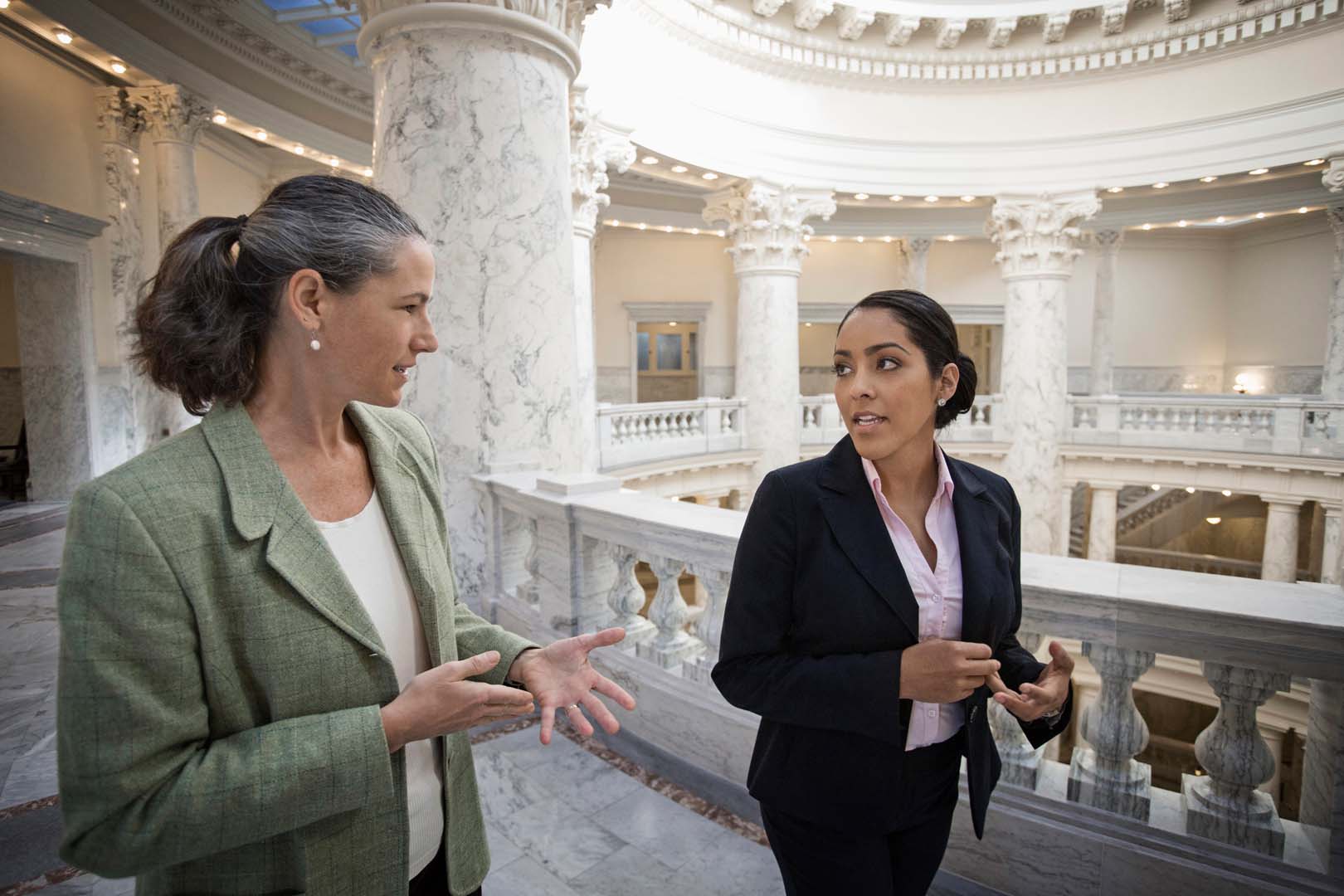-
International Financial Reporting Advisory Services
IFRS reporting advisory serivces of Grant Thornton are carried out by our dedicated team with expertise in IFRS implementation.
-
Audit Services
• Statutory audit • Review of financial statements and financial information • Agreed-upon procedures • FRAS services • Compilation of financial information • Reporting accountant • Cross-border audit • US GAAP audit
-
Audit Quality
We have various methods of monitoring our system of quality control and engagement quality, including real-time involvement of coaches and national office personnel on select audit engagements, reviews of issuer audit engagements prior to archiving by someone outside of the engagement team, and internal inspections of assurance engagements and the system of quality control.
-
Audit Approach
Audit Approach
-
Licensing services
Licensing services
-
International tax planning
Our extensive international network provides us with significant resources to meet all your expansion goals. We strive to develop commercially focused and tailored tax strategies to minimise tax exposures and maximise business efficiency.
-
Expatriate tax planning
We have a broad knowledge base and skills to assist you keep your personal income taxes to a legitimate and reasonable level, while remaining compliant with legislation. We can develop a personalised package for each key employee to take maximum advantage of the exemptions and incentives available.
-
Tax advisory
We will review the proposed business model and transactions and advise on tax implications and recommendations to optimize the tax opportunities under the local regulations and treaties which Vietnam entered into. Furthermore, we coordinate with our GT global tax team to provide a comprehensive tax advisory for the countries involved in the business model and transactions.
-
Tax compliance services
This service is designed to assist enterprises to cope with the statutory tax declaration requirements in line with the Vietnamese tax laws as well as the frequent changes and updates in tax laws.
-
Tax health check
Our Tax Health Check involves a high-level review of specific tax areas to highlight the key issues that need to be rectified in order to reduce tax risks. Through our extensive experience, we have identified key risk areas in which many enterprises are not fully compliant or often overlook potential tax planning opportunities. Our tax health check service represents a cost-effective method to proactively manage risks and reduce potential issues arising as a result of a tax inspection.
-
Transfer Pricing
Transfer pricing is a pervasive tax issue among multinational companies. In Vietnam, the tax authorities require special documentation to report related party transactions. Compliance with transfer pricing regulations is an important aspect of doing business effectively in Vietnam as failure to do so may result in significant penalties.
-
Tax due diligence
We conduct tax due diligence reviews of target companies to analyse their tax exposure and position in relation to acquisitions, mergers or consolidations. We are able to integrate this service with our Advisory Services department in order to offer a comprehensive, holistic due diligence review.
-
Customs and international trade
Our experienced professionals can help you manage customs issues more effectively through valuation planning and making use of available free trade agreements. We also assist Clients in optimising their customs procedures by making use of potential duty exemptions and efficient import-export structures. Risk mitigation activities include customs audit defense and compliance reviews.
-
M&A Transaction
We advise numerous foreign investors on efficient tax structures for their investments. Our experience allows you to consider all the options and set up a corporate structure that meets both operational and tax efficiency requirements. In short, the structure that is best for you.
-
Industrial Zones – Picking A Location For Your Business
Grant Thornton Vietnam’s one-stop services are designed to provide comprehensive support to both new and current investors who are planning to expand or restructure their business in Vietnam. Our professionals have established strong working relationships with landlords, property developers and authorities at various localities. With extensive experiences in liaison with the relevant agencies, we offer assistance including negotiation on land rental rates and efficient management of licensing process. Our customized and flexible solutions can bring benefits of cost efficient location, accelerate licensing process, and optimize tax opportunities while remaining in compliance with legislation.
-
Tax Audit Support
Tax audit support services provide comprehensive assistance to your business in Vietnam. Recent tax practices have shown the general tendency of launching routine tax audit on yearly basis. Tax authorities have been effectively using more sophisticated methods to identify target entities from across different industry sectors.
-
Business Risk Services
Business Risk Services
-
Transaction Advisory Services
Transaction Advisory Services
-
Valuation
Valuation
-
Business consulting services
Finance Management Advisory
-
Accounting services
Accounting services
-
Taxes compliance within outsourcing
Taxes compliance within outsourcing
-
Payroll, personal income tax and labor compliance
Payroll, personal income tax and labor compliance
-
Secondments/Loan staff services
Secondments/Loan staff services
-
Compilation of the financial and non-financial information
Compilation of the financial and non-financial information
-
Accounting systems review and improvement
Accounting systems review and improvement
-
Initial setting-up for accounting and taxes systems
Initial setting-up for accounting and taxes systems
-
Management accounting and analysis
Management accounting and analysis
-
Comprehensive ERP system solution
ERP software is a tool for business operations, production management, order processing and inventory in the business process. Today, ERP software for small and medium businesses has been greatly improved to help businesses manage their business better. The article below will answer all relevant information about what ERP software is and offer the most suitable ERP solution for businesses. Let's follow along!
-
Analyze Business Administration data
We believe in the value that data can bring to the success and development of every business. Our team helps design data architecture supported by tools, to support business governance and provide useful information to management.
-
Financial reporting compliance solution package
Putting financial issues at the heart, this service helps ensure that financial reports for customers comply with both the requirements of Vietnamese accounting regulations and standards (VAS) as well as reporting standards. international finance (IFRS).
-
Third-party ERP extensions
ERP is a long-term solution that requires long-term travel, not short-term. We understand that many businesses cannot deploy the entire ERP system at once due to many different reasons, instead businesses can deploy each part. Over time, these solutions can be expanded to accommodate improved business processes or can even link completely new processes across different departments.
-
Localize, deploy and rebuild the project
Quite a few ERP projects need to be implemented according to current Vietnamese requirements and regulations, but still comply with common international business requirements. These projects need some improvements and adjustments in the right direction.
-
Consulting on technology solutions
We support the selection and implementation of the most suitable solutions, ensuring business efficiency and performance. We will work closely with customers to plan, evaluate and implement the right technology investment strategies and solutions to meet the development needs of businesses.

-
Offshore company establishment service
Using the offshore company model will facilitate the owner in the process of transaction and expand overseas markets, take advantage of the tax policy with many incentives and protect the value of the family enterprise's assets.
-
Private Trust Advisory
The development of the economy with many modern financial instruments has brought many advantages and opportunities for the enterprises, but there are still certain potential risks in any type of business. So how to protect your asset value with an appropriate company structure while stay compliance with relevant regulations?
-
Our values
We have six CLEARR values that underpin our culture and are embedded in everything we do.
-
Learning & development
At Grant Thornton we believe learning and development opportunities help to unlock your potential for growth, allowing you to be at your best every day. And when you are at your best, we are the best at serving our clients
-
Global talent mobility
One of the biggest attractions of a career with Grant Thornton is the opportunity to work on cross-border projects all over the world.
-
Diversity
Diversity helps us meet the demands of a changing world. We value the fact that our people come from all walks of life and that this diversity of experience and perspective makes our organisation stronger as a result.
-
Contact us
Contact us
-
Available positions
Experienced hires
-
Available positions
Available positions

With a strategic geographical location, a competitive labor force and a range of cost-saving factors, Vietnam is considered an attractive investment location for foreign investors, especially those who wish to diversify their investment portfolio. In that context, the Vietnamese government has been continually improving business conditions through reform and upgrade of investment incentives, making the country more appealing to foreign investors.
Tax Incentives
Among all the investment incentives being offered, tax incentives are considered to be the most prominent feature of the Vietnamese business landscape.
Corporate income tax (CIT) incentives are granted to both foreign and local investors, to promote investment in sectors or areas that are in line with the government’s development strategies.
There are two main CIT incentives in Vietnam—preferential tax rates (reduced tax rates), and tax holidays (tax exempted for a certain period or the lifetime of project).
Vietnam also offers customs duty incentive policies and land rental exemption policies that further help to reduce expenses for companies.
Tax incentives available in Vietnam are summarized below.
Preferential Tax Rates
Companies are entitled to pay CIT at a rate lower than the standard 20%. There are three preferential rates—10%, 15% and 17%. These lower rates can either hold good for the entire lifetime of a project or for a pre-defined period, depending on the specific provisions. With a few exceptions, such as high-tech enterprises or projects, the period for the preferential tax rate basically starts from the first year of revenue generation.
Tax Holidays
Companies can qualify not to pay CIT for a pre-defined period, which is generally four years. In some cases, after the completion of a tax holiday, companies also receive a partial tax holiday, where they only have to pay 50% of the payable tax. The period of tax holiday generally starts with the first year of profit making or fourth year of revenue generation, whichever is earlier. In certain cases, companies can enjoy the benefits of a tax holiday and preferential tax rates at the same time.
Vietnam’s Law on Investment, as well as its subsequent decrees and circulars, specifies the types of projects that qualify for incentives and the nature of incentives for which these projects qualify. The most common incentives are those available for investments made in specialized locations, industries, or investment zones in the country.
Eligibility for Tax Incentives
The Vietnamese government provides tax incentives for businesses based on the following factors—sector, location, and size of investment.
Incentives for Prioritized Sectors
Certain sectors in Vietnam are encouraged for investment, and include industries that the government plans to incentivize, facilitate investment in, or which are beneficial for society:
- high-tech industries;
- supporting products used in high-tech industries;
- software products;
- research and development;
- selected agricultural and allied sectors;
- infrastructure development;
- renewable energy;
- education;
- health care;
- sports and culture.
Companies operating in the above sectors are given the following tax incentives.
- Firms making new investments in technology-related sectors, garments, footwear, automobiles, goods that are not produced domestically, and investments where the products meet the EU quality standard, are taxed at 10% for 15 years. This period also includes a tax holiday for the first four years and 50% reduction in the CIT rate for nine subsequent years.
- Companies operating in the sectors of education and training, health care, sports, culture, and environment, have a tax rate of 10% for the entire lifetime of their project.
- Companies earning their income from prescribed agricultural and allied activities are eligible for a 15% tax rate for the entire lifetime of their project. Firms producing equipment for the above prescribed agricultural sectors can also receive a tax incentive in the form of a 17% tax rate for the entire lifetime of their project.
Incentives in Disadvantaged Locations
Depending on the quality of infrastructure development, social conditions, and geographical condition, locations are categorised into three groups with regard to available incentives: areas with difficult socio-economic conditions; areas with extremely difficult socio-economic conditions; and remaining areas. Companies operating in difficult and extremely difficult socio-economic conditions are generally offered tax incentives. Firms operating in Special Economic Zones (SEZs), High-Tech Zones (HTZs) and Information Technology Parks (ITPs) are also eligible for tax incentives.
The tax incentives based on location are as follows:
- firms operating in extremely difficult areas, SEZs or HTZs are taxed at 10% for the first 15 years of revenue generation. This period also includes a tax holiday for the first four years followed by a 50% reduction for the subsequent nine years;
- firms operating in difficult areas are taxed at 17% for 10 years of revenue generation. This period also includes a tax holiday for the first two years, followed by a 50% reduction for the subsequent four years;
- firms operating in industrial parks are eligible for two years of tax holidays, followed by a 50% corporate tax reduction for the subsequent four years.
Size of Project
Tax incentives are also available for large manufacturing projects (excluding those in natural resources). There are two criteria for categorizing large projects:
- manufacturing projects with an investment capital of more than 6 trillion Vietnamese dong ($261 million) disbursed within three years of being licensed:
- the minimum revenue is 10 trillion Vietnamese dong per annum by the fourth year of operations at the latest; or
- the minimum headcount is 3,000 by the fourth year of operations at the latest.
- manufacturing projects with an investment capital of more than12 trillion Vietnamese dong disbursed within five years of being licensed and using prescribed high technology.
The investments meeting either criterion are taxed at 10% for 15 years. These companies are also eligible for a tax holiday for the first four years, followed by a 50% reduction in the CIT rate for the next nine years.
Other Incentives
Exemption from Customs Duties
Businesses can also enjoy exemptions from import duty if they meet one of the following criteria:
- goods are imported to form fixed assets of select projects prescribed under the law;
- goods are imported for implementing export processing contracts with foreign parties;
- raw materials and supplies are imported to directly serve the production of software products, and cannot be produced domestically;
- goods are imported for use in scientific research and technological development, and cannot be produced domestically.
Incentives on Land Rental
A land rental fee exemption is provided for investment projects that satisfy specific conditions such as investment in encouraged sectors or certain business fields and/or encouraged geographical locations:
- exemption for the whole operational period—projects on the list of special investment encouragement sectors investing in areas of particularly difficult socio-economic conditions;
- 15 years of exemption—projects on the list of special investment encouragement sectors investing in areas of difficult socio-economic conditions or projects on the list of investment encouragement sectors investing in areas of extremely difficult socio-economic conditions;
- 11 years of exemption—projects investing in areas of extremely difficult socio-economic conditions; projects in the list of special investment encouragement sectors; projects in the list of investment encouragement sectors investing in difficult socio-economic areas;
- seven years of exemption—projects investing in areas of difficult socio-economic conditions;
- three years of exemption—projects on the list of investment encouragement sectors; business and production relocation under urban planning or due to environmental pollution.
Planning Points
Conditions for qualifying for entitlement to an incentive are not always straightforward, applicable to practical investment circumstances, or consistently interpreted by the provincial tax authorities.
Foreign investors who are intending to invest in Vietnam should therefore consider the following points before executing their investment plan.
Pursuant to the law, investment projects, when meeting multiple eligibility requirements for CIT incentives, shall be entitled to the most favorable incentive. Investors should carefully assess their options when entering the Vietnamese market in order to find the incentive program that balances cost reduction and compliance.
While the withdrawal of incentives is uncommon, investors who fail to meet the requirements specified in their incentives packages may lose incentives and can be subject to respective penalties for incorrect tax declaration due to wrong incentive application.
The Ministry of Planning and Investment is in charge of granting investment incentives, but this work is conducted in conjunction with local governments. During the application process, various technical ministries may be involved to assess an investment project. Once investment incentives are granted, the Ministry of Finance and tax departments are responsible for scrutinizing the applicable incentives at the later stage.
Vietnam’s tax incentives, while attractive on paper, can present challenges to investors unfamiliar with the country’s legal system. Foreign investors interested in investing in Vietnam and securing investment incentives must ensure they are aware of the available incentives which will provide the best saving for them over the duration of their project.








